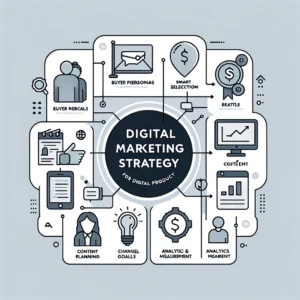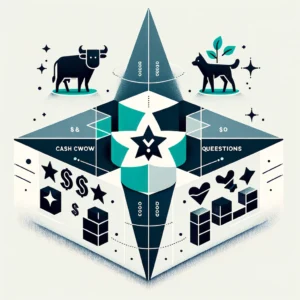Introduction to Agile Software Development with Scrum
The landscape of software development has been dramatically reshaped by Agile methodologies, with Scrum leading the charge as one of the most prominent frameworks. Agile, as a project management approach, emphasizes continuous collaboration, improvement, and delivering value in quick, iterative cycles. It stands in stark contrast to the traditional “waterfall” model, which follows a linear and sequential approach. Agile methodologies, including Scrum, pivot around the idea of breaking projects into phases, promoting a cycle of planning, executing, and evaluating continuously.

Scrum, specifically, is an empirical framework used extensively in Agile software development. It’s designed to add structure, discipline, and a layer of transparency to the Agile process. The core of Scrum lies in its ability to enable teams to hypothesize how they think a process should work, implement it, reflect on the outcomes, and make necessary adjustments for improvement.
In this article, we delve deeper into the realm of Agile software development through the lens of Scrum, exploring its intricacies, methodologies, and real-world applications, especially for those who have an intermediate understanding and seek to deepen their knowledge.
The Empirical Foundation of Scrum
Scrum’s effectiveness in agile software development is largely attributed to its empirical foundation. This approach is characterized by observation and experimentation rather than theory. It provides a platform for teams to establish hypotheses on their work methods, test these methods in real-world scenarios, and then adapt based on the results and experiences gained. This empirical nature of Scrum is fundamental, as it allows teams to constantly refine and improve their processes, ensuring efficiency and effectiveness in project management.
Key Values and Principles of Scrum
Integral to understanding Scrum’s empirical nature are the key values and principles it upholds:
- Commitment: Team members commit personally to achieving the team’s goals.
- Courage: Team members confront tough problems head-on.
- Focus: Teams concentrate on the work identified for the sprint and the overarching goals.
- Openness: Team members and stakeholders maintain transparency about all work and challenges.
- Respect: There’s mutual respect among team members, acknowledging each other’s capabilities and independence.
Alongside these values, Scrum operates on three primary principles:
- Transparency: This involves creating an environment where team members are fully aware of each other’s challenges, helping to surface and address issues that may hinder success.
- Inspection: Scrum incorporates frequent inspection points, like the Daily Scrum and Sprint Review meetings, allowing teams to continuously assess their work and process.
- Adaptation: Teams are encouraged to constantly evaluate their methods and adapt any aspects that are not proving effective.
These values and principles create a robust framework where teams can be agile, responsive, and efficient in their software development processes. They ensure that Scrum is not just a set of procedures but a mindset that fosters collaboration, flexibility, and continuous improvement.
Implementing Scrum in Agile Teams

Scrum’s integration into Agile methodologies is seamless and synergistic, enhancing the Agile principle of adaptive and iterative development. It’s particularly well-suited for projects that involve a significant amount of work, which can be logically divided into smaller, manageable iterations lasting 2-4 weeks, known as Sprints. This approach is ideal in settings where cross-functional teams collaborate on product development, enabling each member to contribute their expertise effectively.
The Structure of Scrum: Roles and Meetings
To implement Scrum successfully, it’s essential to understand its structure, which includes defined roles and specific events or meetings:
- Roles:
- Product Owner: Responsible for maximizing the value of the product and managing the product backlog.
- Scrum Master: Ensures that the team follows Scrum principles and practices, facilitates meetings, and removes impediments.
- Development Team: A cross-functional group that does the actual work of designing, developing, and testing the product.
- Meetings:
- Sprint Planning: Teams decide what work will be done during the Sprint, breaking down tasks and setting goals.
- Daily Scrum: A brief meeting to synchronize activities and create a plan for the next 24 hours.
- Sprint Review: Held at the end of a Sprint to inspect the Increment and adapt the Product Backlog as needed.
- Sprint Retrospective: A meeting to reflect on the past Sprint and plan for improvements in the next Sprint.
The Scrum framework fosters a dynamic environment where team members self-organize and collaborate closely, with the Scrum Master and Product Owner providing guidance and support. The various Scrum events are designed to promote regular inspection and adaptation, ensuring that the team stays aligned with project goals and can respond swiftly to changes or challenges.
Scrum in Practice: From Theory to Application
Adopting Scrum in agile software development goes beyond theoretical understanding; it requires practical application and adaptation to the unique context of each project. Scrum’s real-world application has shown significant improvements in collaboration, communication, and product quality in software development teams.
Real-world Application of Scrum in Software Development
The practical application of Scrum involves organizing work into Sprints, with each Sprint aimed at delivering a potentially shippable product increment. This approach enables teams to focus on delivering small, incremental parts of the project, making it easier to track progress and make necessary adjustments. It also facilitates regular feedback from stakeholders, ensuring that the product developed aligns with user needs and market demands.
How Scrum Improves Collaboration and Communication?
Scrum enhances team collaboration and communication through its structured yet flexible approach. The daily Scrum meetings, Sprint planning, and retrospective sessions provide regular platforms for team members to discuss their progress, share insights, and address challenges. This continuous dialogue ensures that everyone is on the same page and can work together effectively towards common goals.
Enhancing Product Quality with Scrum
One of the key benefits of implementing Scrum in software development is the improvement in product quality. The iterative approach allows for regular testing and refinement of the product, ensuring that any issues are identified and resolved promptly. By breaking down the project into manageable segments, teams can focus on quality at every step, rather than rushing to meet deadlines, which often compromises the end product.
Case Studies and Success Stories
Numerous organizations have successfully implemented Scrum, leading to enhanced productivity, improved team dynamics, and higher-quality products. These case studies highlight the flexibility and effectiveness of Scrum in various environments, from small startups to large enterprises. They serve as real-life examples of how Scrum can transform the software development process.
Overcoming Challenges in Scrum Implementation
Implementing Scrum in agile software development is not without its challenges. However, understanding these challenges and knowing how to navigate them is key to leveraging Scrum’s full potential.
Common Challenges in Scrum Adoption
- Resistance to Change: One of the biggest hurdles is the natural resistance to change, especially in organizations used to traditional project management methods. Overcoming this requires strong leadership, clear communication of the benefits of Scrum, and training to ensure everyone understands the new processes.
- Misunderstanding the Scrum Roles: Often, there’s confusion about the roles of the Scrum Master, Product Owner, and Development Team. This can lead to inefficiencies and conflicts. Clear role definitions and education about each role’s responsibilities are crucial.
- Inadequate Commitment: Scrum requires a high level of commitment from all team members. Sometimes, teams struggle with this aspect, especially if they are not used to the intensity and pace of Scrum. Building a strong team culture and ensuring buy-in from all members can help mitigate this challenge.
- Difficulty in Adapting to Iterative Development: Teams transitioning from a waterfall approach may find the iterative nature of Scrum challenging. This often manifests in struggles with planning and executing sprints effectively. Continuous learning and adapting, along with experienced Scrum guidance, can ease this transition.
Tips for Effective Scrum Adoption
- Gradual Implementation: Start with a pilot project or team and gradually expand Scrum practices across the organization.
- Training and Education: Invest in comprehensive training for all team members to ensure a clear understanding of Scrum principles and practices.
- Scrum Coaching: Engaging a Scrum coach can provide teams with the expertise and guidance needed to navigate the initial challenges of Scrum adoption.
- Building a Supportive Culture: Foster a culture that values openness, respect, and continuous improvement, which are key to the success of Scrum.
Effective Scrum implementation can lead to significant improvements in project management, team dynamics, and product quality. While the initial shift to Scrum can be challenging, the long-term benefits often outweigh the difficulties encountered during the transition.
Conclusion: The Future of Agile Development with Scrum
As we’ve explored throughout this article, Scrum has proven to be a powerful framework within the Agile methodology for software development. Its empirical nature, combined with a set of core values and principles, makes it an adaptable and effective approach for managing complex projects. The real-world applications of Scrum have demonstrated significant improvements in team collaboration, communication, and product quality, reaffirming its value in the software development industry.
Recapping the Key Benefits of Scrum
Scrum offers numerous benefits, including:
- Enhanced Team Collaboration and Communication: By fostering an environment of transparency and regular interaction, Scrum encourages teams to work together more effectively.
- Continuous Improvement and Adaptability: The iterative nature of Scrum allows for constant refinement of processes and products.
- Higher Product Quality: Regular feedback loops and incremental development lead to better quality products that meet customer needs.
Looking Ahead: Scrum’s Evolving Role
The future of Agile development with Scrum looks promising. As organizations continue to seek more efficient and effective ways to manage projects, Scrum is likely to evolve and integrate with new technologies and methodologies. The adaptability of Scrum means it can keep pace with the rapid changes in software development, making it a sustainable choice for many organizations.
Embracing Change and Innovation
As the Agile movement grows, Scrum will continue to play a pivotal role. It’s not just about following a set of rules or practices; it’s about embracing a mindset of continuous improvement, collaboration, and adaptability. The true power of Scrum lies in its ability to evolve and respond to the changing landscape of software development.
In conclusion, Agile software development with Scrum is not just a methodology; it’s a pathway to building more responsive, efficient, and effective teams that can deliver high-quality products in a rapidly changing world. As teams and organizations continue to adopt and adapt Scrum, its principles and practices will undoubtedly continue to influence and shape the future of Agile software development.



